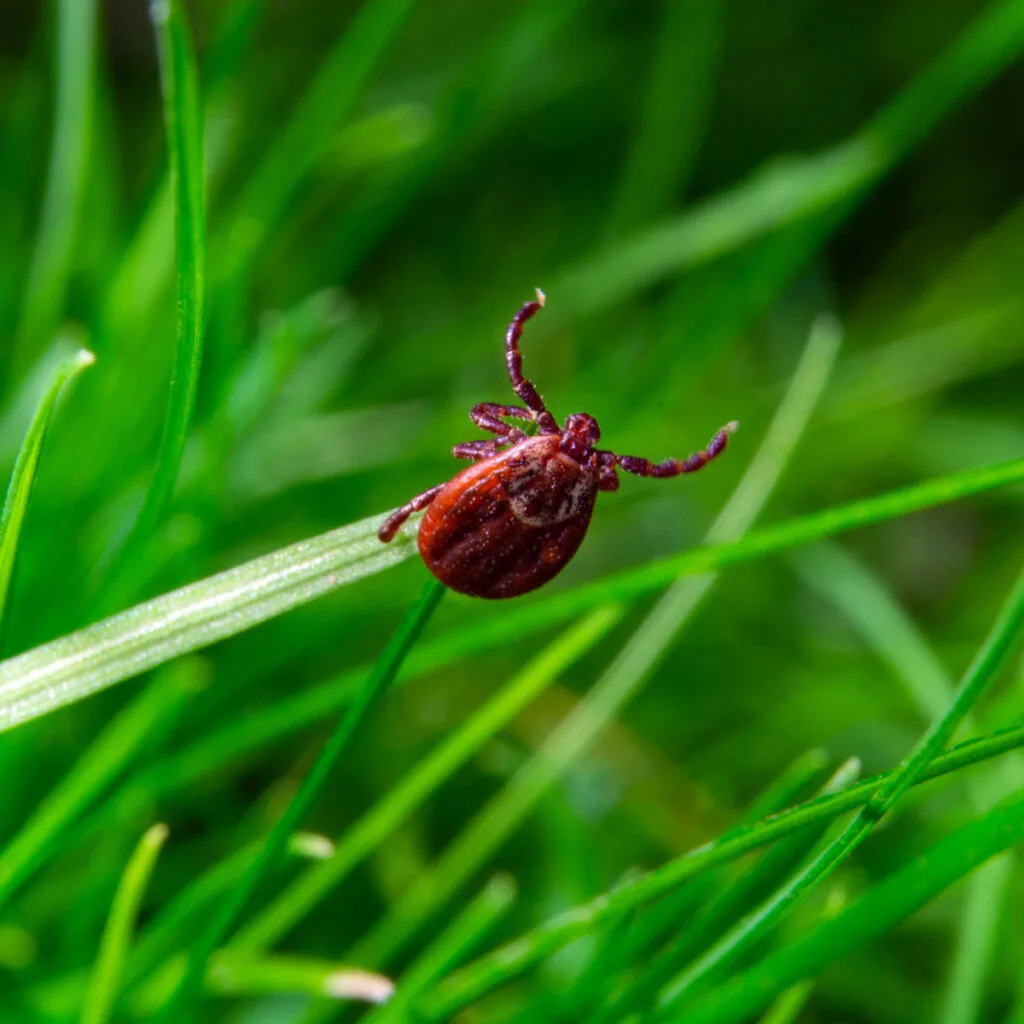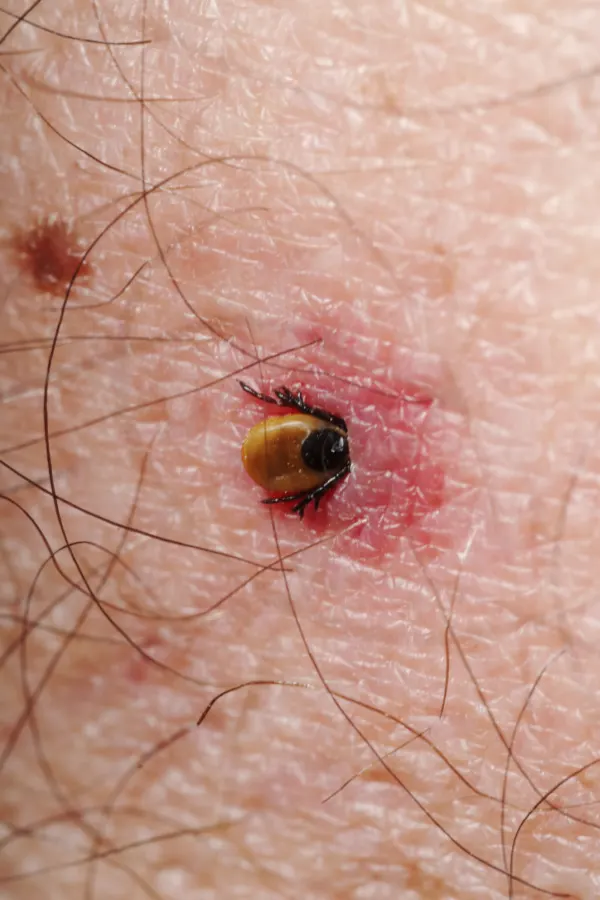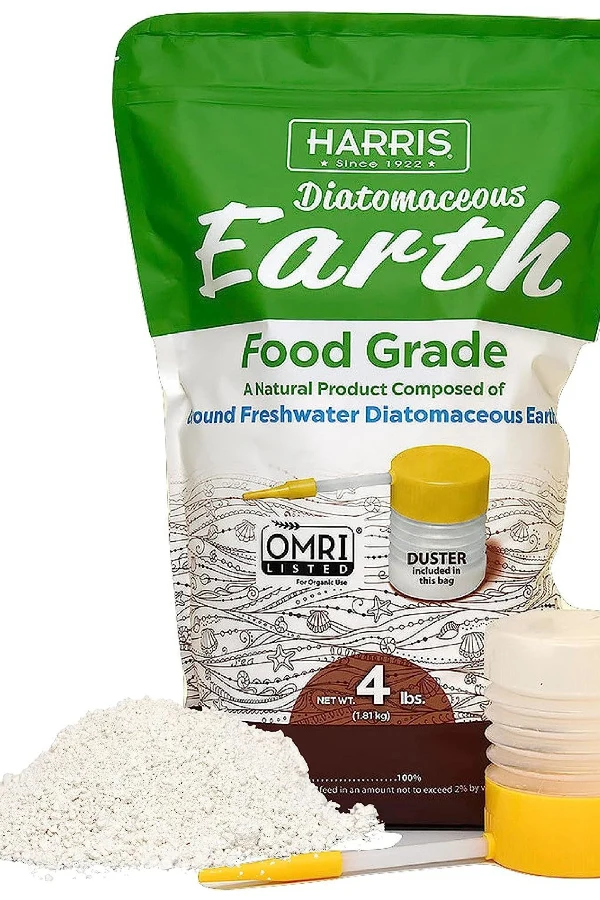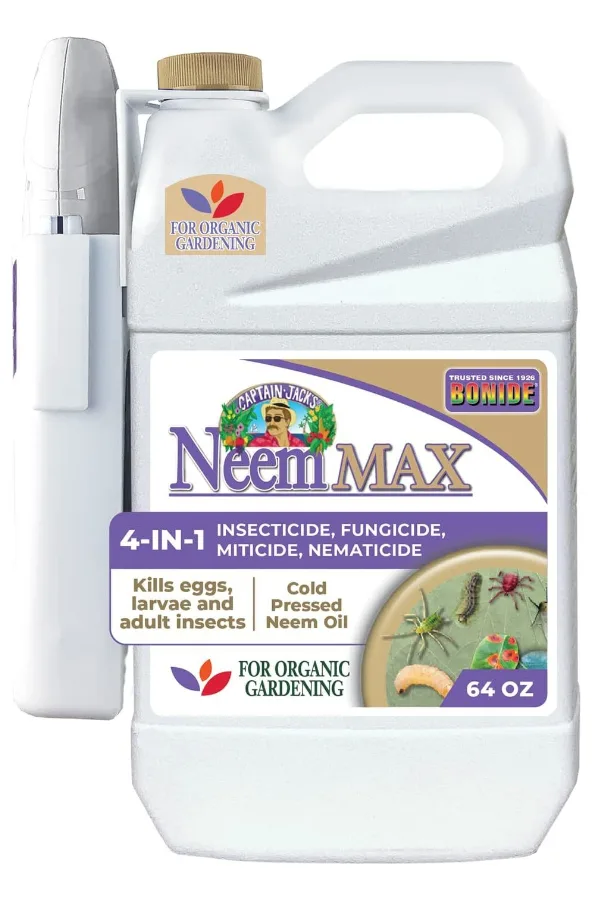Are you looking for a few simple, all-natural and highly effective ways to get rid of ticks in your yard this year – and eliminate them for good?
It’s almost scary how an insect so small in stature can cause such seriously dangerous issues for pets and humans. Not only can a tick’s bite be painful, it can carry and spread along with it a tremendous amount of disease.
One of the most notable illnesses that ticks spread via bacteria from their bite is Lyme disease. Lyme disease can affect both pets and humans alike, and in all kinds of different ways. It symptoms can vary from painful rashes and flu-like complications, to incredibly painful joint pain, itching and weakness all over the body.

But it doesn’t stop with just Lyme disease. There are actually dozens of additional ailments ticks carry and pass on to humans and other animals. And unfortunately, all of them have their own list of unpleasant side effects and symptoms.
Because of those dangers and more, eliminating ticks and keeping them out of the outdoor spaces around your home is one of the biggest key of all for protecting you, your family and pets.
Ticks Live Everywhere – How To Get Rid Of Ticks In Your Yard
Ticks cannot fly or even jump, but they are amazingly diligent crawlers. Once established in an area, they can quickly breed and become an issue. Especially if the conditions and habitat are to their liking.
Although thought by many to only be an issue when visiting the deep woods, ticks are just as likely to set up shop in a city or suburban neighborhood yard as well. In fact, they can often be even more plentiful in residential locations because of having access to two things they love – thick grass and plenty of moisture.
There are quite a few sprays and repellents on the market that can help protect against ticks. And although repellents are important in the fight to stay safe, they don’t eliminate ticks or keep tick populations out of your yard. That of course means they still remain around to reproduce and grow their population even more.

So is it really possible to get rid of ticks from your backyard garden, flowerbeds and lawn? You bet it is!! And best of all, you can do it without harsh chemicals. With that in mind, here is a look at four key methods to eliminate ticks from living in the outdoor spaces around your home!
How To Get Rid Of Ticks From Your Yard
#1 Diatomaceous Earth (DE)
Although it has quite the long and scientific name, Diatomaceous Earth is quite natural and safe to use – and even more, quite effective against ticks!
Diatomaceous Earth is a powdery substance created from the fossilized remains of tiny ocean organisms from long ago. The best part of all – it is wonderful for eliminating all kinds of pests, including ticks – but it is completely natural and safe for pets and humans.
When the powder comes in contact with a tick, it scratches their outer skin. When that occurs, ticks are unable to keep moisture in, and they dehydrate and die. This can happens if the powder lands on them when you apply it, or if they crawl over it later.
One thing is for sure, when applied to lawns, it is extremely effective at killing not just tick populations, but also fleas. Talk about a win-win for pets! Affiliate Product Link: Diatomaceous Earth

Depending on the size of your lawn, you can apply with a duster or simply by sprinkling it on areas that are active. After applying, you can also sprinkle a thin line as a border around your lawn to keep any new ticks from crawling in.
#2 Neem Oil – How To Get Rid Of Ticks In Your Yard
Neem oil is an amazingly effective weapon against ticks. Not only is it 100 percent organic and all natural, it also is great to have on hand for dealing with all kinds of other garden and lawn pests too! See: How To Use Neem Oil – The Organic Solution To Pest & Disease Control!
Neem oil is made from the oil within a seed from a neem tree. And as it turns out, the oil has some pretty incredible abilities for eliminating many insects such as ticks.
When neem oil makes contact with a tick, it blocks oxygen. And much like humans, without oxygen, ticks simply can’t survive. The good news? It is completely safe for humans and pets. And, when sprayed properly, it can also keep key pollinating insects like bees and butterflies safe as well.
Listen In Below To Our Podcast For More Great Info On Eliminating Ticks!
For tick control, you can make an effective spray with six to eight tablespoons of neem oil mixed into one gallon of water. Adding a teaspoon of mild liquid detergent to the mix will make the spray even more effective, allowing the spray to cling to the tick’s body.
Once your solution is ready to go, you can use a pump sprayer to easily and quickly coat your lawn with the spray. For large yards, a backpack sprayer can really come in handy. You can also purchase neem oil already mixed and ready to go.
You may need to reapply every week for a few weeks to clear the area completely. Always try to spray when there is no threat of rain for 24 to 36 hours. Product Affiliate Link: Bonide Captain Jack’s 64 oz Neem Max Cold Pressed Neem Oil Spray
#3 Keep Your Lawn Mowed – How To Get Rid Of Ticks
Believe it or not, one of the best ways to control the population of ticks is by maintaining a neat and tidy lawn. These tiny blood-sucking creatures love thick cover and moisture. And nothing provides more of both for them than an overgrown lawn!
High grass and tall weeds are the ultimate welcome sign for ticks. Not only does it give them a great place to hide and lie in wait, the dense, thick grass is also perfect for holding in moisture.
Mow your lawn often to keep grass from becoming too tall and inviting. In addition, don’t allow clumps of decaying grass to stay in the yard. Grass clumps hold moisture in, and serve as a wonderful home for ticks to live and thrive.

The same goes for weeds left to grow high around trees, buildings, walkways. walls and woodpiles. All of these locations are typical hideouts where ticks can thrive. The less cover you provide for them, the more they will avoid your lawn. Ticks do not like excessive heat, and with little cover, they move on to better pastures.
#4 Watering Your Plants & Lawn – How To Get Rid Of Ticks In Your Yard
Last but not least, how and when you water your lawn and plants can have a big impact on your tick population too. As mentioned earlier ticks love moisture. In fact, they need it to survive. Especially in the heat of summer.
Watering your lawn, garden and flowerbeds can actually help keep them alive. It doesn’t meant you can’t or shouldn’t water your plants, but how you do it makes all the difference.
When watering flowers and plants, water right at the source. Avoid using large sprinklers that soak entire areas full of water. Remember the more water that is spread around, the more it will help keep ticks alive. When large sprinklers are used – it creates more pools of water for ticks.
In addition to watering smart and keeping your yard tidy, what you plant in your flowerbeds can also have a big impact on the tick population around your landscape. There are certain plants that ticks simply cannot stand to be near or around.

By planting these repelling plants in your garden, flowerbeds, or even in pots and containers, it can truly help keep ticks away. A prime example of this is lavender. Ticks absolutely detest the floral scent, and will move far away from wherever it is growing.
The same goes for other herbs such as rosemary, sage and all of the mint family too. Best of all, these plants are perennials. That means they can be planted once, and come back to help every season to keep populations at bay.
What To Do When A Tick Bites – How To Get Rid Of Ticks In Your Yard
Sometimes, no matter how hard you try to keep them away, a tick is going to find its way onto your skin and latch on. And when it does, there are a few things that can go a long way in protecting you against many of the diseases the tick can carry.
First and foremost, check your skin regularly for any sign of a tick. Remember, they are crawlers, and they will often try to locate themselves in a far away and hard to reach location.
The real key is early removal. In fact, by simply removing a tick within the first 24 hours, you can greatly reduce the spread of Lyme disease.

When removing, do not use flames or a hot match to attempt to get it to release. This can actually allow the tick to release more infection into your skin. Instead, use tweezers to pull it out from as close to your skin as possible.
And one final note, contrary to popular belief, if the mouth breaks off, don’t panic. It cannot transmit any disease as long as the body has been removed. It can be safely removed much like a splinter without worry.
Here is to getting rid of ticks from your yard – and keeping them away from your lawn and landscape for good!
Follow Our Facebook Page For Great Gardening Tips And Advice! This Is My Garden Facebook Page
This Is My Garden is a garden website created by gardeners, for gardeners. Jim and Mary Competti have been writing gardening, DIY and recipe articles and books and speaking for over 15 years from their 46 acre Ohio farm. They publish three articles every week, 52 weeks a year. Sign up today to follow via email, or follow along!
